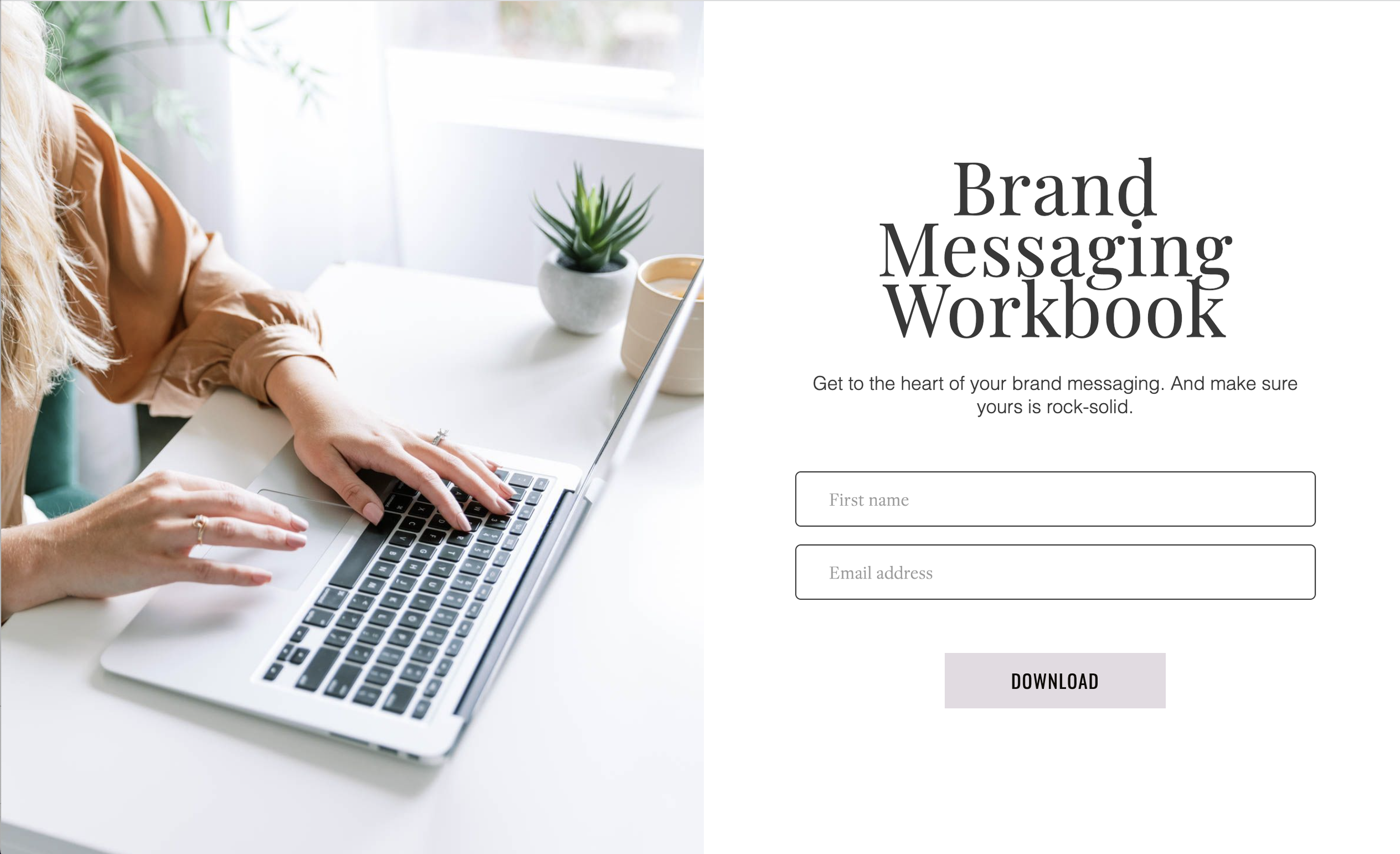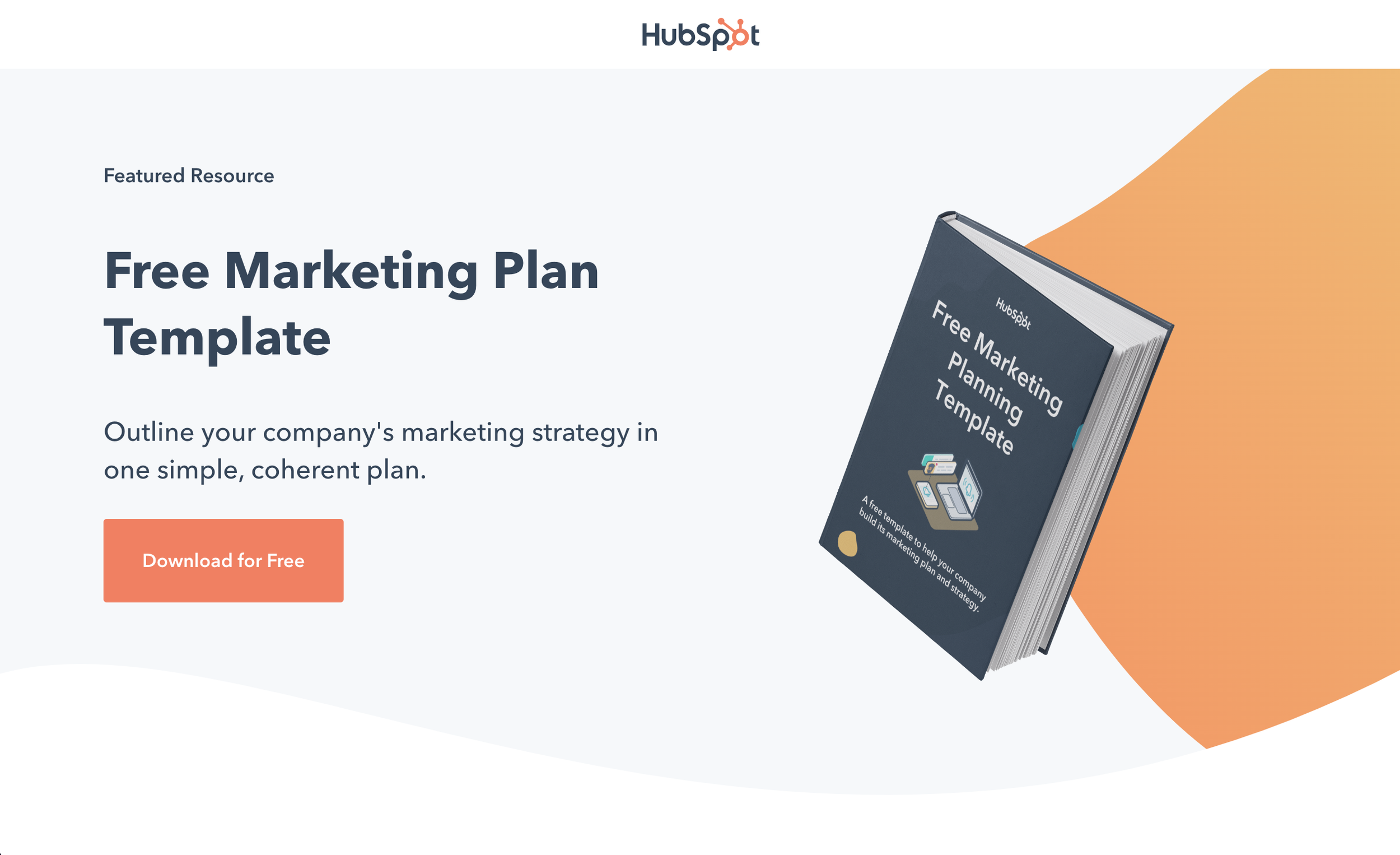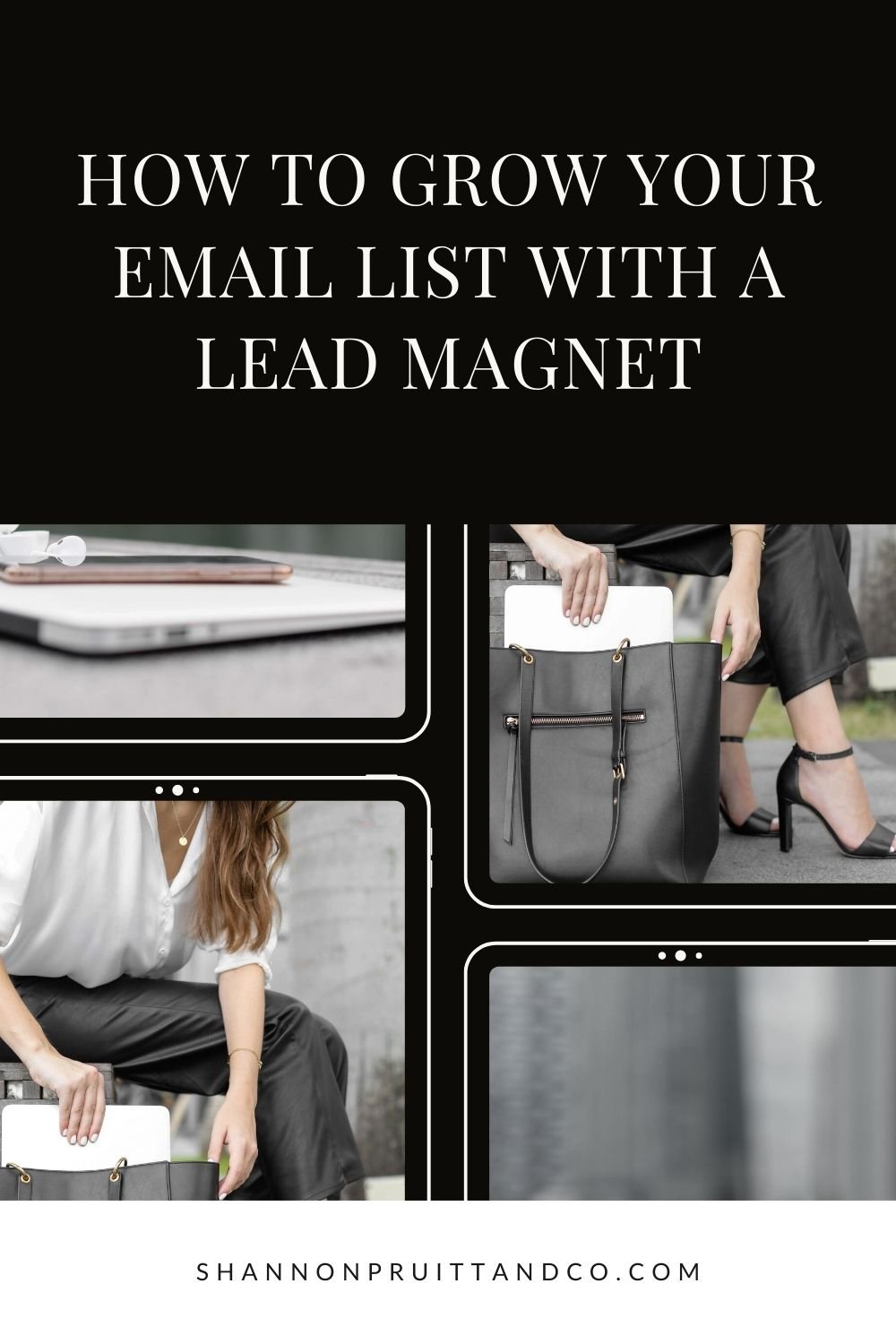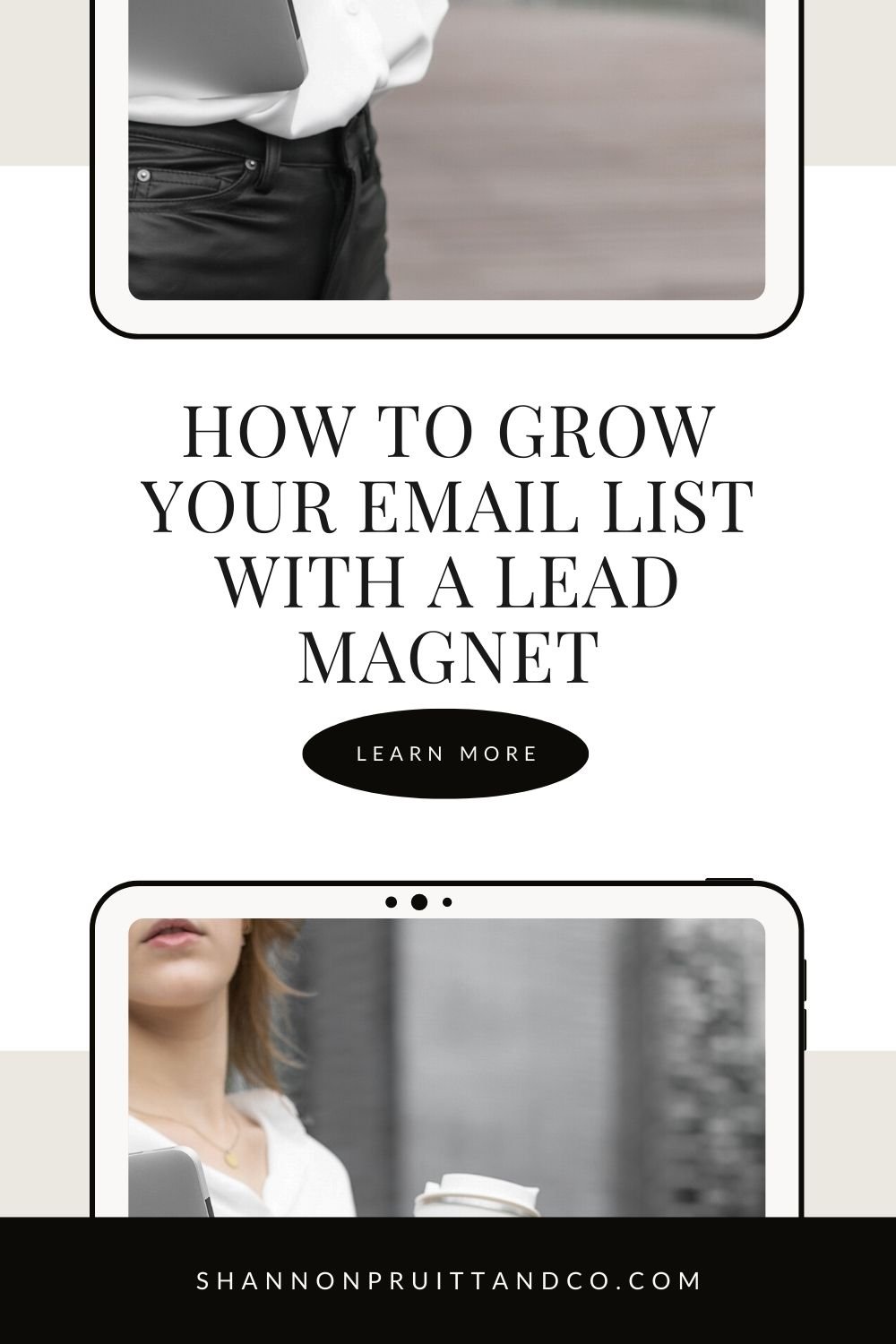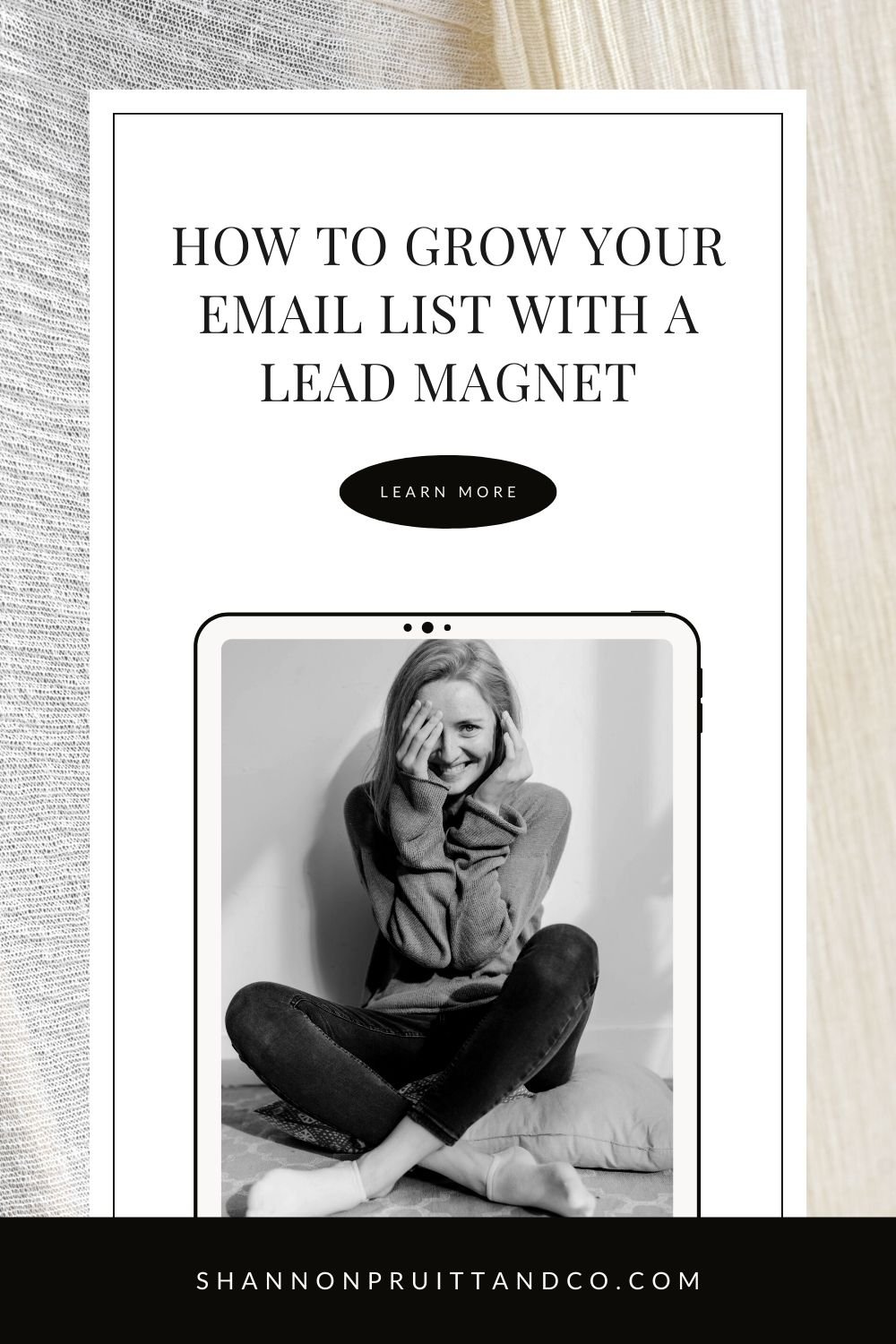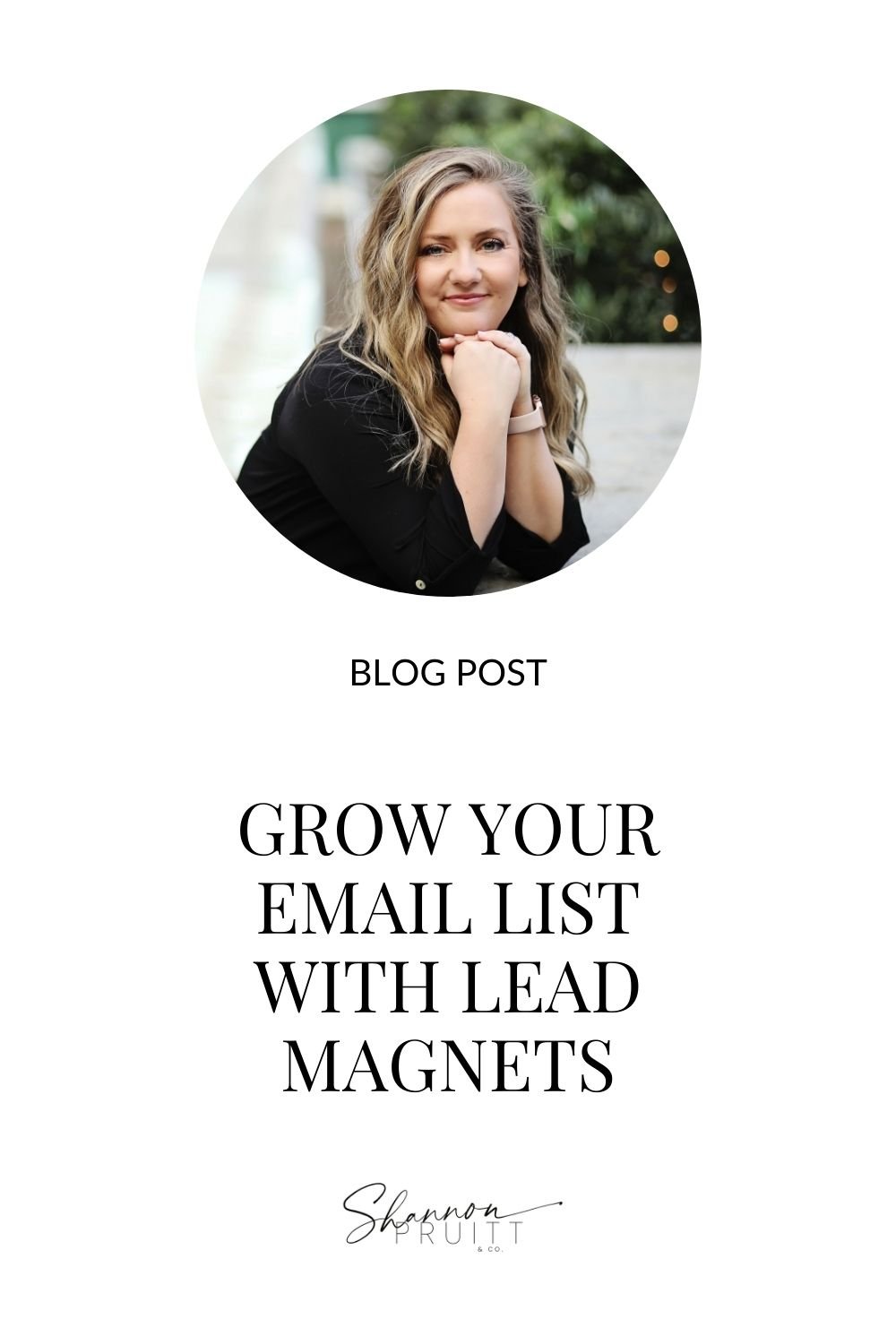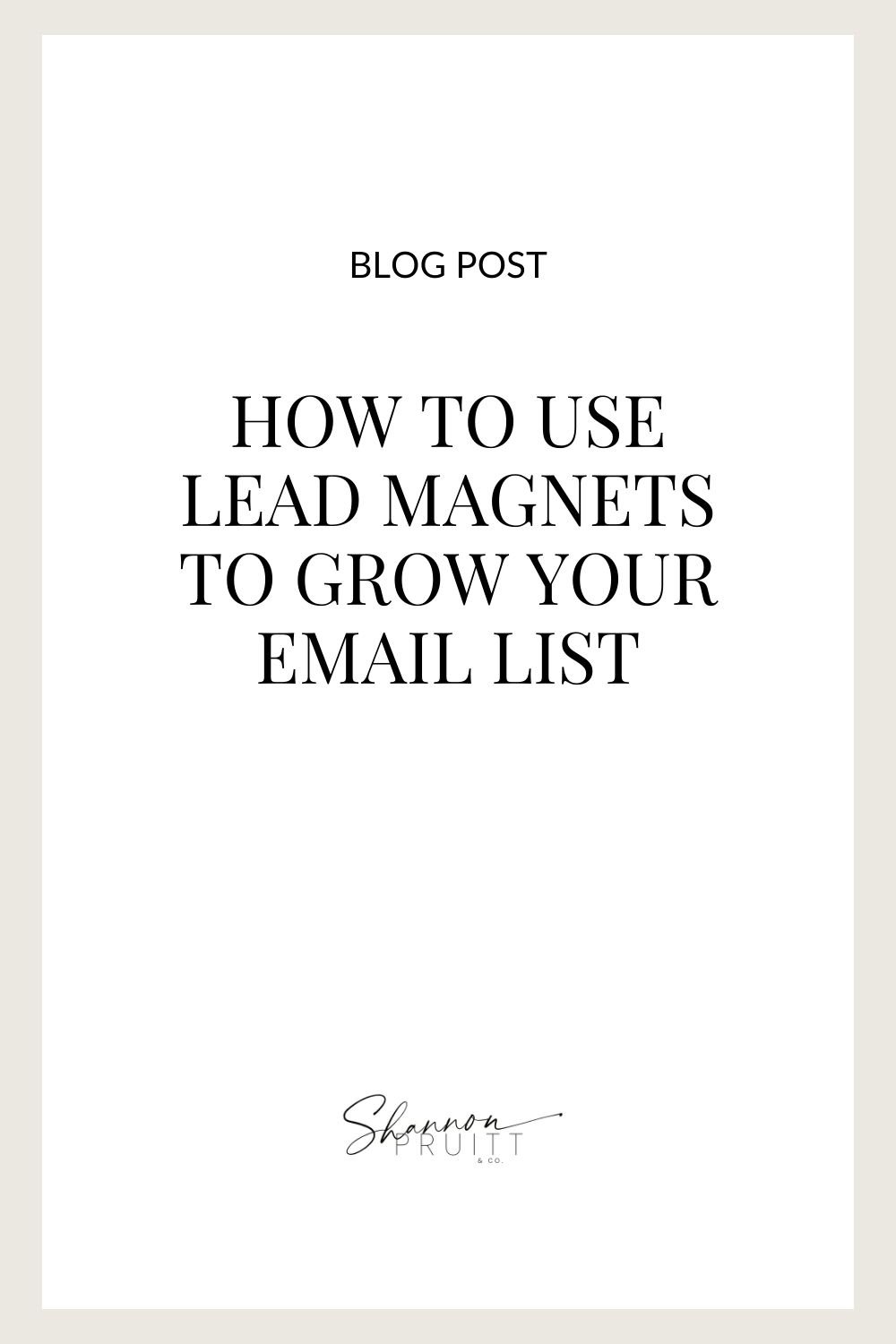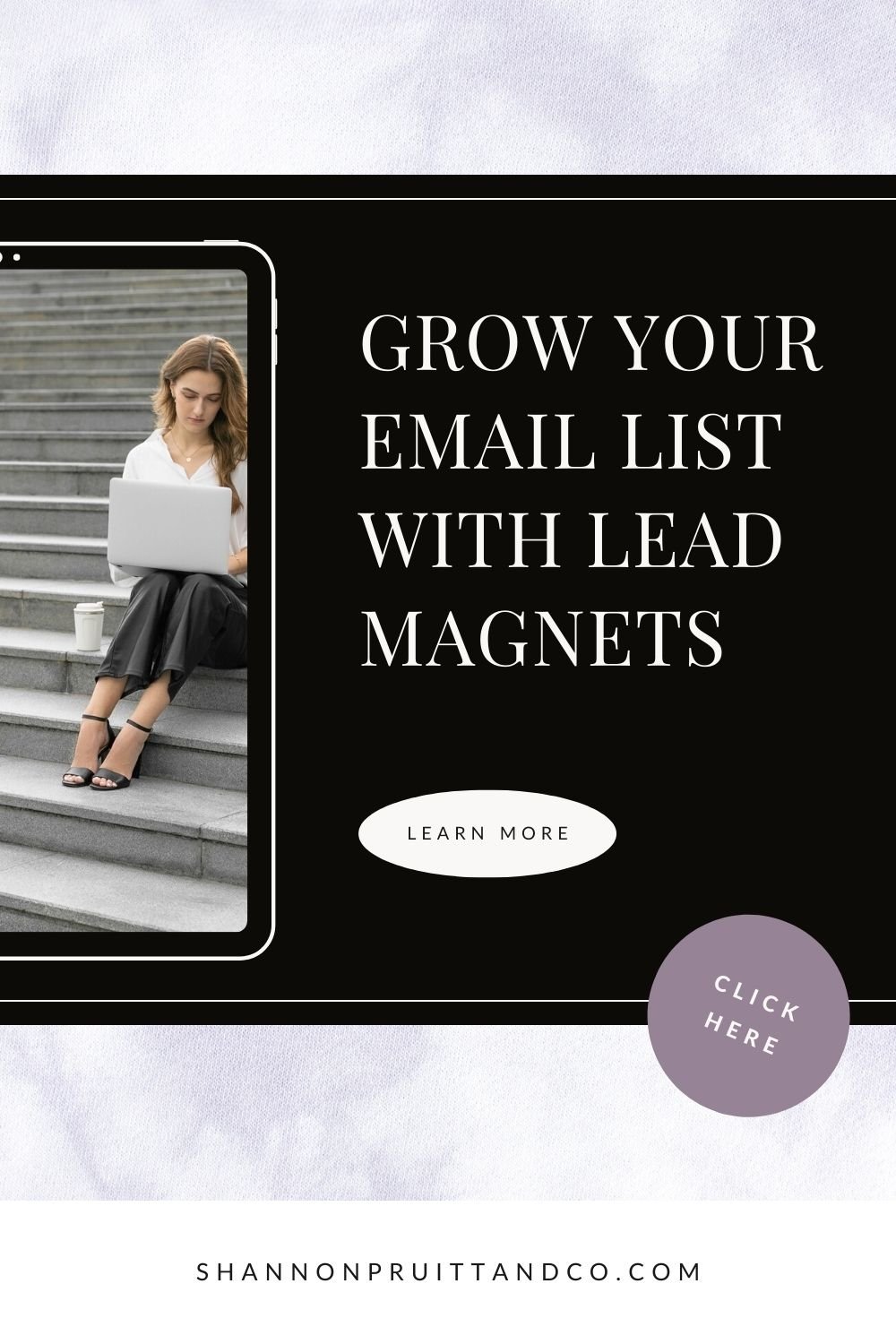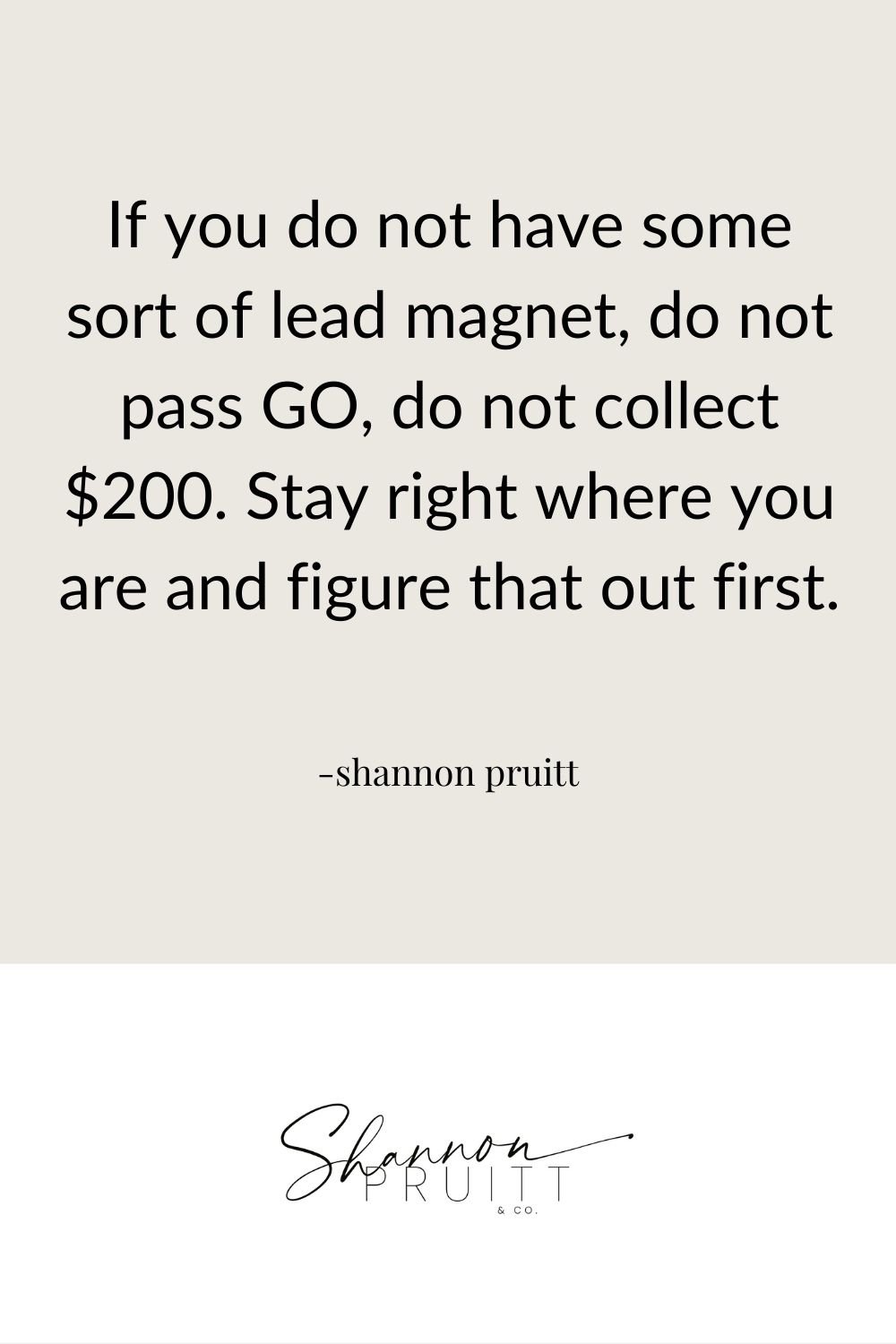
How to Grow Your Email List with a Lead Magnet
Alternate title considered: How to get more eyeballs on your email list
In case you’ve missed it, I’m a huge proponent of email marketing. Your email subscribers are people who already know and like you. And in case you missed it—here’s why you need an email list.
Your email subscribers are warm, sometimes hot, leads. They’re locked in on what you have to say and offer. They’ve willingly given you their information which is essentially them raising their hand saying, “Oh I want more of what you have to offer.”
And email is one of the BEST ways to build relationships with your people. It feels more personal than social media nowadays. (Ironic, huh?)
Before we dive into how to build your email list with a lead magnet or freebie, let’s talk about what you DON’T do when it comes to your email list…
-
You DON’T buy subscribers. Just like you don’t buy instagram followers. Plus, like the IG algorithm is smarter than the bots, so are email providers. And if you’re buying subscribers, your emails are going to be flagged as spam.
-
You DON’T add people to your email list without their permission. I’m not a lawyer, so seek yours out. But adding people to your email list without their consent is illegal. Period.
-
You DON’T lie about how often you’re going to email them. This is 1) a bad business move, 2) dishonest and sketchy, and 3) going to turn people off because they’re expecting one thing and getting another.
So how do you grow your email list?
With lead magnets.
If you do not have some sort of lead magnet, do not pass GO, do not collect $200. Stay right where you are and figure that out first.
What is a lead magnet?
It’s a free resource of some kind that you are giving away for free in exchange for someone’s contact information (aka email address). The more valuable you make this lead magnet, the better. But also–keep it simple.
People love simple. Just because you want to provide value doesn’t mean you have to make your lead magnet long, large, or complicated.
There’s a delicate balance between providing more value than they expect while also keeping it simple enough that they aren’t overwhelmed.
The whole goal of a lead magnet is to attract the right people, your ideal clients.
The trick is to find the lead magnet that your ideal client wants. You have to know their desires, pain points, and hesitations to be able to determine if a lead magnet is worth it for them.
What kind of lead magnet should you offer?
It depends, but you want it to be connected to or related to the offering or content you’re trying to sell. You’re showcasing your expertise through your lead magnet, and you’re giving your audience a next step. Many times this next step is seen in a last page of a freebie or last few minutes of a free video, or even within the email where you’re delivering the lead magnet, and you’re telling your audience who you are and how you can help them.
Some questions to ask yourself when coming up with an idea for your lead magnet:
-
What are my ideal client’s biggest pain points and challenges?
-
What will help my ideal client the most?
-
What questions do I get asked the most?
-
What’s the EASIEST way for my ideal client to consume and use this content?
Why not just straight-up ask your audience what they want? You can create a poll or question sticker and place it on Instagram, asking your audience what they would be more interested in.
Like many things in your marketing, you want your lead magnet to be magnetic. You want it to make your audience keep coming back for more.
One thing you might want to consider is adding a video component to your lead magnet, even if it’s just a 10 minute tutorial or explanation. It makes it a little more personal, provides more value, and gives your audience a chance to continue to view you as the expert. You can even house all of your lead magnets and videos in a course platform where you can track who has viewed each video and really build out a sales funnel.
Some ideas of different formats of lead magnets:
-
Templates
-
Workshops
-
Email Challenges
-
Checklists
-
Workbooks
-
Resource List
-
Digital Magazines
-
Webinars
-
Masterclasses
-
Quizzes
-
Calculators
-
Facebook Groups
When should you launch your lead magnet?
When you’re ready to actually start implementing email marketing on a regular basis.
Do not start offering a lead magnet if you’re not ready to start emailing people. Full stop.
How do you get people to download your lead magnet?
By writing compelling and personality-packed opt-in copy.
Opt-in copy is the copy, the text and words that sell, that goes on your opt-in form…. the same form that tells people what they’ll get by giving you their email address.
Here’s a couple of examples of opt-in forms:
From yours truly
How do you write opt-in text for a lead magnet?
Step 1:
Point-blank tell your audience what they’ll get, weave in the benefits they’ll receive, and offer any details.
So if you’re giving them a brand messaging workbook, tell them that not only that they will receive the workbook, but the bigger win is they’ll receive more clarity in their brand’s messaging. That clarity will earn them more trust and authority with people, which will eventually earn them more sales or clients.
If you’re giving them a tutorial and strategy for setting up their first Clickup list, remind them that they’ll also receive more time back and more peace of mind knowing that their tasks and to-dos will be set up on autopilot to send them reminders.
Then give them the details:
-
How quickly will they get the freebie?
-
What format will it be?
-
If it’s a newsletter, how often will you be emailing them, and will it be worth taking up space in their inbox?
And remember: those benefits you’re providing through your lead magnet should be solid enough for someone to be willing to give you their email address. You’re giving them plenty of value while keeping it simple.
Step 2: Like with most copy, you want to keep your opt-in copy simple.
You don’t need a long-form sales page here. Most people are skimming websites, including opt-in pages, so you have a very brief amount of time to convince them of whatever it is you’re selling (even if you’re “selling” a freebie).
For example, the opt-in copy for my brand messaging workbook says: “Get to the heart of your brand messaging. And make sure it’s solid.” It’s short and simple.
Another example is my weekly email sign-up form. It says: “Be the first to get insider info, delivered to your inbox every Tuesday. I try to make it fun. Pinky promise.” So in those short lines, the potential subscriber is learning 1) what they’re going to get and 2) how often they’re going to get it.
While you don’t need to make this opt-in page long, you can add some social proof through testimonials if you want. These can be screenshots from DMs and emails or formal reviews your previous clients and customers have left you.
What are some other ways to get people on my email list?
Make sure you’re talking about it.
Whether you focus on Instagram, Facebook, TikTok, Pinterest, YouTube, or a podcast, make sure you’re telling people you send out regularly scheduled emails. And ask them to join. Chances are, since only roughly 10% of your followers see your Instagram posts, they haven’t seen you talk about it yet. And even if they have, it takes 7 times for someone to hear something before it makes a big enough impact for them to purchase or buy. So keep talking about it. For those of you who use Instagram, add the link to your bio. Make it a highlight.
Add it to your website as a form.
Add an in-line form on your website where visitors can opt-in to your email list without having to download a freebie.
Flodesk makes this super easy.
When you’re writing blogs and other content, be sure to include CTAs that tell readers to subscribe.
Give your inquiries an option to be added to your email list when they fill out your inquiry form.
All you have to do is add a checkbox with some sort of copy that gives them the option of being added to your email list. For example, “Check this box if you’d like to be added to my VIP email list.”
So now what?
Do not do this until you are ready to start emailing people regularly,.
-
Sign up for an email marketing service provider. I use and love Flodesk, and you can read more about why here. AND you can use this link to receive 50% off your first annual subscription.
-
Create 3 opt-in forms: a pop-up that you’ll place on your homepage, an inline form at the bottom of your website that’s also great to use in blog posts, and a full landing page where you can direct people to straight from Instagram or other platforms. For now, you can link these to encourage people to sign up for your email list. Unless you’re ready to create that lead magnet. And if so—GO GO GO!
You might also be interested in…


